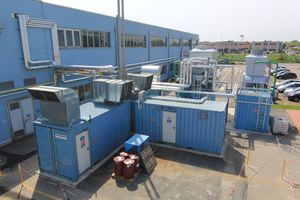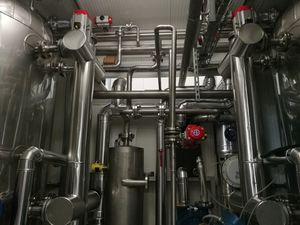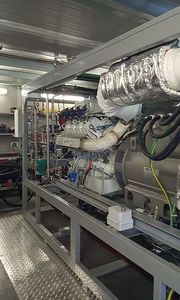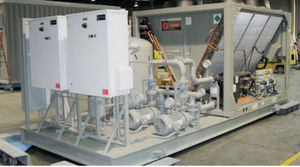
- Production Machines
- Other Manufacturing Equipment
- Heat recovery system
- Termogamma Energy Solutions

- Company
- Products
- Catalogs
- News & Trends
- Exhibitions
Heat recovery system SAvER
Add to favorites
Compare this product
Characteristics
- Type
- heat
Description
Delivers: Always: Thermal Energy
Optional: Cooling Energy, Electricity, Steam
Consumes: No consumption of fuel or electricity, the source is waste heat
Suitable sectors: Industrial, Service
Examples: Factories, Hotels, Airports, Office buildings
Installation: Indoor, Outdoor
SAvER is a system which improves the energy efficiency of industrial processes and reduces their carbon footprint. Based on the principle of waste heat recovery and customized engineering design, it delivers free of cost useful energy by taking it from the various “hot points” available in almost all industries – chimney stacks, waste hot water, etc. After this heat is captured, it is delivered where it is needed in the right form and at the right temperature (steam, hot water, hot air). It can also be transformed into cooling energy, or can even be used to produce electricity. SAvER saves natural resources, protects the environment, optimizes expenditure and is an indispensable system for every contemporary manufacturing industry in its journey to clean energy and circular economy.
Waste Heat Recovery (WHR) is a technology which captures waste heat energy and delivers it as useful energy where it is needed and with the required parameters. It can provide the heat for an industrial process or for space heating. As its source is waste energy, it is practically free of cost.
There are multiple benefits of waste heat recovery such as reduced energy costs, primary energy savings, reduced environmental impact and carbon emissions.
Waste heat sources
Waste heat may be present not only in several industrial processes and applications, but also in some residential/commercial buildings
Catalogs
Termogamma SAvER
3 Pages
*Prices are pre-tax. They exclude delivery charges and customs duties and do not include additional charges for installation or activation options. Prices are indicative only and may vary by country, with changes to the cost of raw materials and exchange rates.











